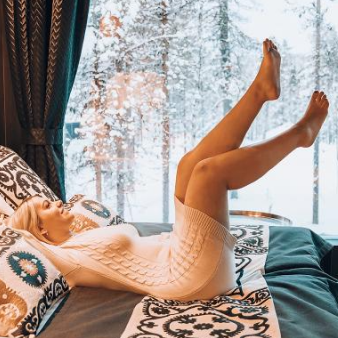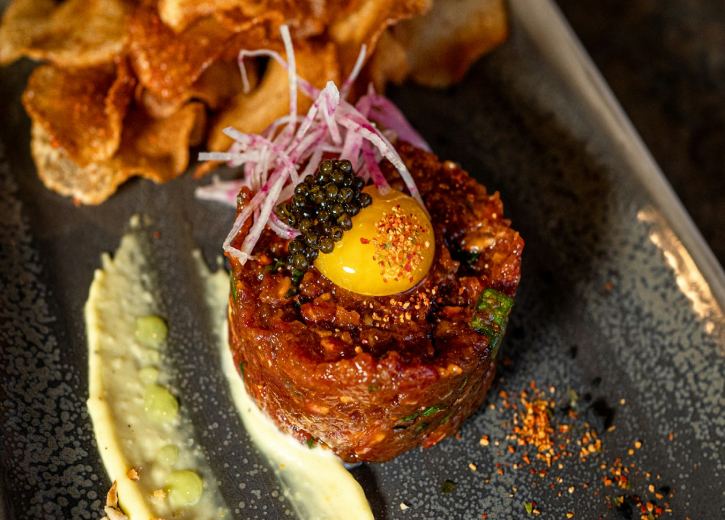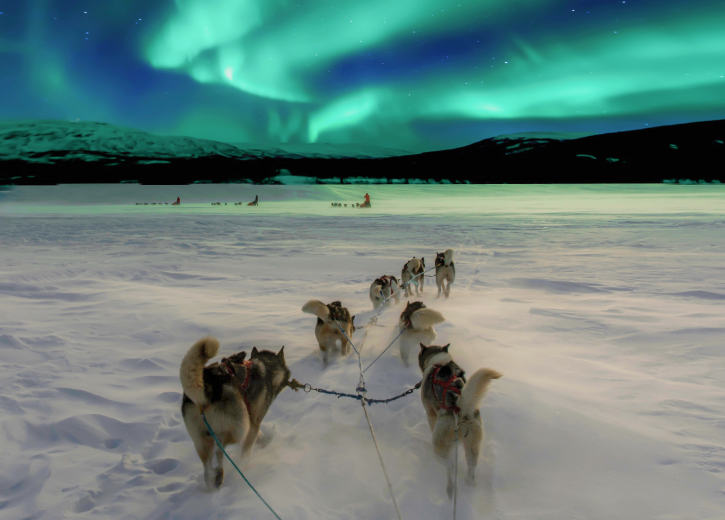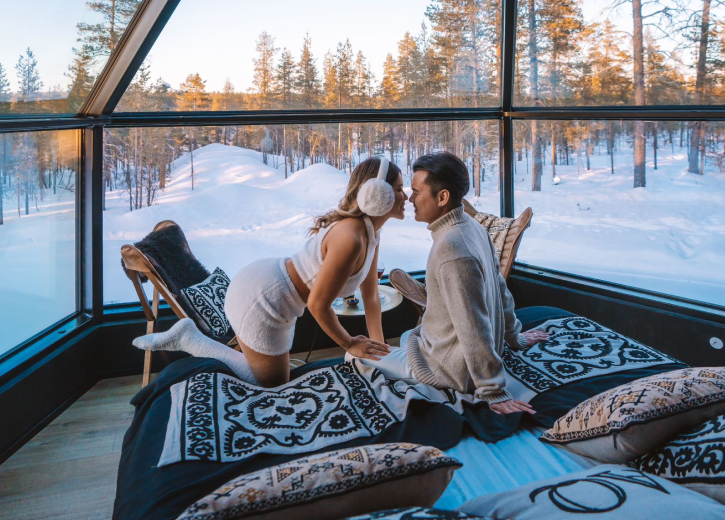Finnish Lapland and Swedish Lapland differ primarily in their landscapes, accessibility, and visitor experiences whilst sharing the same enchanting Arctic environment. Finnish Lapland features more fells and wilderness areas with excellent infrastructure for tourists, whilst Swedish Lapland offers more mountainous terrain and a slightly different cultural experience. Both regions provide spectacular northern lights viewing opportunities, though Finnish Lapland tends to have more dedicated aurora accommodation options such as glass igloos. The Finnish side is generally more accessible for international travellers, whilst the Swedish side can be less crowded during peak seasons.
Understanding Lapland: A tale of two countries
Lapland is a vast Arctic region that stretches across the northernmost parts of Finland, Sweden, Norway, and Russia’s Kola Peninsula. Though united by similar natural wonders and Sámi cultural heritage, the Finnish and Swedish portions of Lapland each offer distinct experiences for visitors.
This magical territory covers approximately 100,000 square kilometres in Finland (about 30% of the country) and 109,000 square kilometres in Sweden (about 25% of the country). Despite sharing borders and the Arctic Circle, these two Laplands have developed unique characteristics shaped by different national policies, infrastructure investments, and tourism approaches.
Both regions feature breathtaking landscapes characterised by snow-blanketed forests, frozen lakes, and rolling fells, where visitors might spot wildlife including reindeer, moose, and the elusive fox darting through snow-covered terrain. The midnight sun in summer and the polar night in winter create extraordinary light conditions that define the Lapland experience across both countries.
What are the geographical differences between Finnish and Swedish Lapland?
Finnish Lapland features a landscape dominated by gentle fells and vast forests, with Pallas-Yllästunturi National Park showcasing some of the region’s most stunning scenery. The highest point, Halti, reaches 1,324 metres above sea level. In contrast, Swedish Lapland boasts more dramatic mountain ranges, particularly along its western border with Norway, where peaks in the Scandinavian Mountains rise well above 2,000 metres.
Accessibility varies significantly between the regions. Finnish Lapland benefits from excellent transport infrastructure, with international airports in Rovaniemi, Kittilä, and Ivalo offering direct connections to major European cities during winter months. Swedish Lapland, while having airports in Kiruna and Luleå, typically requires more connections for international travellers.
The Finnish side features more developed tourism destinations like Rovaniemi (the “official” home of Santa Claus), Levi, Ylläs, and Saariselkä. These areas offer concentrated services within relatively compact areas. Swedish Lapland’s attractions are often more spread out, with notable destinations including Kiruna, Abisko National Park (famous for its clear skies), and the Icehotel in Jukkasjärvi.
Water features also distinguish the two regions. Finnish Lapland contains thousands of lakes and the headwaters of major rivers, while Swedish Lapland is known for its powerful rivers flowing down from the mountains, creating impressive rapids and valleys.
How does the aurora viewing experience differ in Finnish vs Swedish Lapland?
Both Finnish and Swedish Lapland lie within the aurora oval, making them excellent destinations for northern lights viewing, but there are notable differences in the experience. Finnish Lapland typically offers more cloud-free nights in certain areas, particularly in the northern regions near Kilpisjärvi and Inari, where dry air masses from the Arctic create favourable viewing conditions.
Swedish Lapland’s premier aurora viewing location is Abisko National Park, renowned worldwide for its microclimate that creates a “blue hole” – a patch of clear sky even when surrounding areas are cloudy. This phenomenon is due to the park’s location between mountains and Lake Torneträsk.
Light pollution levels vary between the regions. Finnish Lapland has developed numerous remote wilderness locations specifically for aurora viewing, with minimal artificial light. The northern Finnish communities also typically observe “aurora-friendly” lighting practices during winter months. While Swedish Lapland also offers dark skies, its more mountainous terrain sometimes requires more planning to find optimal viewing locations away from light sources.
Weather patterns slightly favour Finnish Lapland for consistency, with average winter temperatures between -10°C and -15°C creating stable viewing conditions. The glass igloo accommodation concept, pioneered in Finnish Lapland, has revolutionised the aurora experience by allowing visitors to watch for the lights from the comfort of a warm bed – a viewing style that has become increasingly popular.
What unique cultural experiences can you find in Finnish Lapland that differ from Swedish Lapland?
Finnish and Swedish Lapland both share the rich heritage of the Sámi people, the indigenous population of the region, but express this culture in different ways. Finnish Lapland offers more accessible Sámi cultural experiences for tourists, particularly around the Inari region, home to the Siida Sámi Museum and Nature Centre. Visitors can experience authentic Sámi reindeer farms and learn about traditional crafts like “duodji” (handicrafts).
Swedish Lapland’s Sámi experiences tend to be more integrated into everyday life rather than packaged for tourists, offering visitors seeking authentic cultural immersion a different perspective. The annual Jokkmokk Winter Market in Swedish Lapland has been held for over 400 years and represents one of the most important Sámi cultural gatherings.
Culinary traditions vary slightly between the regions. Finnish Lapland’s cuisine features specialities like “poronkäristys” (sautéed reindeer) served with lingonberries and mashed potatoes, alongside freshwater fish dishes. Swedish Lapland shares similar reindeer-based cuisine but incorporates more berries and herbs from the mountain regions, and is known for its “suovas” (smoked reindeer meat).
Sauna culture is significantly more prominent in Finnish Lapland, where the traditional smoke sauna experience followed by ice swimming is considered an essential part of the visitor experience. While saunas exist in Swedish Lapland, they don’t hold the same cultural importance as in Finland, where sauna is a way of life.
Which Lapland destination offers better accommodation options for northern lights viewing?
Finnish Lapland has pioneered aurora-focused accommodation concepts, most notably the glass igloos that have become iconic symbols of Lapland tourism. These purpose-built structures feature heated glass ceilings or walls that allow guests to watch for northern lights from the comfort of their beds. The Finnish side also offers a wider range of specialist aurora accommodations including panorama cabins, northern lights houses, and wilderness lodges specifically positioned in aurora hotspots.
Swedish Lapland takes a different approach, with its accommodation highlights including the original ICEHOTEL (rebuilt annually from ice and snow), treehouse accommodations, and wilderness lodges. While these offer unique experiences, they are less specifically designed for in-room aurora viewing compared to their Finnish counterparts.
In terms of capacity and variety, Finnish Lapland generally offers a broader spectrum of accommodation options across different price points, from basic cottages to ultra-luxury villas. Swedish Lapland tends toward either basic mountain stations or high-end boutique experiences, with fewer mid-range options.
Both regions have developed innovative concepts that connect visitors with nature. Finnish Lapland focuses on bringing the outside in through glass structures, while Swedish Lapland often emphasises getting visitors out into nature with wilderness camps and outdoor sleeping experiences, even in winter.
Key takeaways: Choosing between Finnish and Swedish Lapland
Your ideal Lapland destination depends on your travel priorities. Choose Finnish Lapland if you value easier accessibility, more developed tourism infrastructure, purpose-built aurora accommodations, and a wide range of organised winter activities. Finnish Lapland also offers a more straightforward experience for first-time Arctic visitors with its comprehensive services.
Swedish Lapland might be your better choice if you prefer less crowded destinations, more dramatic mountain landscapes, opportunities for advanced winter sports like backcountry skiing, and a less commercialised feel. Swedish Lapland can also offer a more independent travel experience for those comfortable with self-guided adventures.
Consider these practical factors when deciding:
- Travel time and connections – Finnish Lapland typically offers more direct flights from European hubs
- Budget considerations – Swedish Lapland can sometimes be slightly more economical, though both regions have options across price ranges
- Activity preferences – Dog sledding, snowmobiling, and reindeer experiences are available in both, but Finnish Lapland offers more variety and frequency
- Accommodation style – Choose Finnish Lapland for glass igloos and aurora-focused stays; Swedish Lapland for unique concepts like ice hotels and treehouses
- Cultural interests – Both offer Sámi experiences, but with different approaches to cultural tourism
For the most comprehensive Lapland experience, consider exploring both regions if time allows. They complement each other beautifully, offering two distinct perspectives on the magic of the European Arctic and its captivating northern lights displays.



